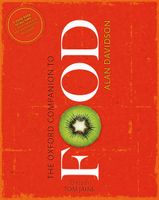Advertisement
Dosa
Published 2014
Dosas can be made with a variety of batters, each giving a slightly different texture or colour, but the traditional dosas are made with rice and lentils (urd dal) mixed with water, a little butter and sometimes flavoured with fenugreek, then left to ferment overnight. The mixture is then ground to a batter the next day before being fried on a griddle or on a traditional dosa kalu (‘dosai stone’). The dosa kalu is in fact made of cast iron. Other types of dosa include:
Rava dosa, sometimes called sooji dosa, made with semolina and rice and flavoured with cumin, ginger, asafoetida, and nuts.
Narial dosa, which includes coconut.
Jaggery dosa, made with flour, rice flour, coconut, and flavoured with jaggery and cardamom.


